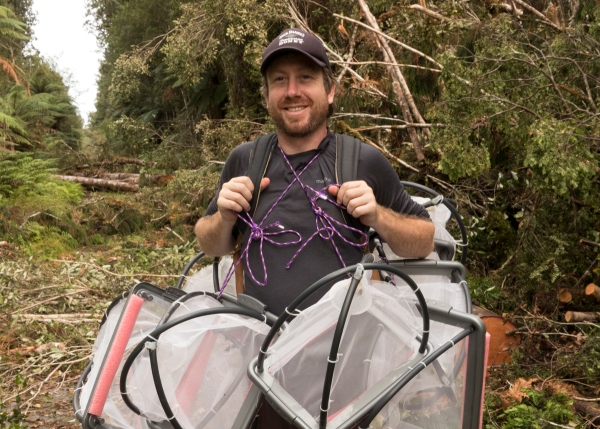What is your area of specialty/role at NIWA?
I am a Quantitative Freshwater Ecologist in the Freshwater Modelling Group in Christchurch. I specialise in statistical and process-based modelling of populations and communities of freshwater species. At NIWA I have primarily been working on building species distribution models to estimate temporal trends in occupancy and distribution of New Zealand freshwater fish. This work will help identify conservation threats to these species. I joined NIWA after working at the Department of Conservation as a technical advisor, implementing a long-term national freshwater monitoring programme which aimed to assess whether there were trends or changes in biodiversity. Before that I worked on several Biological Heritage Science Challenges at Canterbury University after finishing my PhD.
Why did you want to work in freshwater ecology?
Working at NIWA gave me a chance to continue research in freshwater science but with a strong focus on statistics and large data sets. I like to make decisions based on data and information, not just at work but also in life in general. I appreciate the objectivity that this process brings to bear on decisions about freshwater management.
What’s the most rewarding thing you’ve done in your career so far?
I really enjoyed the process of discovery during my PhD, investigating the effects of extreme drought on brown mudfish population dynamics. Especially the ability to track the life histories of each fish sampled from birth to death and then incorporating these observations into models of the effect of climate change on population dynamics. My PhD study involved a few months at Melbourne University working with a research group developing meta-population models, taking data sets I had collected for five years and converting them into special models to show population changes. It was very rewarding to learn how to apply these data to a model. Most of my PhD study time was spent in Canterbury. There are five species of mudfish, and the Canterbury mudfish species have a conservation status of Threatened (Nationally Critical) under the NZ Threat Classification System.
What do you like to do outside of your work at NIWA?
Outside of work I enjoy playing my banjo in Irish traditional sessions at various pubs, the occasional barn dance and jam sessions with other musicians. I am a self-taught banjo player, after learning the concertina and the mandolin. The banjo is my favourite instrument to play though, it has a distinctive sound that can punch through the sound of other instruments in a band. I also enjoy tramping outside of work.


